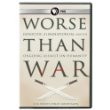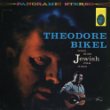Arts
Film
Israeliness, Communism and Feminism
Films
 Army of Crime
Army of Crime
What Paris’s Nazi occupiers label an “army of crime” is in fact a group of refugees and communists, mostly Jews, led by a French Armenian poet and organized to sabotage the Nazis’ activities. Based on real characters and events, Robert Guédiguian’s wartime thriller features atmospheric shots of Paris street corners and interiors but suffers from excessive length and a confusing abundance of characters. Lorber Films (www.lorberfilms.com). —Renata Polt
Stalin Thought of You
Like many Soviet Jews, political cartoonist Boris Efimov supported the Russian Revolution and its promise of equality for all. In his film about Efimov, who died in 2008 at 109, Kevin McNeer documents not only the life of the prolific satirist, but also Soviet history. Although Efimov’s journalist brother was imprisoned and later assassinated by Stalin, Efimov continued to do the dictator’s bidding, rationalizing that “it was a complicated time.” An Oblomov Films Production (www.stalinthoughtofyou.com). —R.P.
Amos Oz: The Nature of Dreams
Masha Zur Glozman and Yonathan Zur’s documentary follows Israel’s best-known novelist on an international book tour. Oz ruminates on “Israeliness” (“I love [Israel], even when it’s unbearable”); Europe (ambivalence); the past (“[it] cannot be brought back to life”); the Palestinian conflict (he favors a two-state solution); writing; and more. Encountering celebrities such as Salman Rushdie and Shimon Peres, Oz’s conversations, by turns literary, intellectual and political, are never less than perceptive and witty. Yonathan & Masha Films (www.ymfilms.co.il). —R.P.
Theater
Driving Miss Daisy
Atlanta Jewish widow and retired teacher Daisy Werthan and African-American chauffeur Hoke Coleburn take two decades to become best friends in Alfred Uhry’s “Driving Miss Daisy.” Yet Vanessa Redgrave’s steely but ultimately vulnerable Daisy and James Earl Jones’s feisty and insightful Hoke give the modest Pulitzer Prize-winning play a Cadillac ride in its Broadway premiere. Boyd Gaines is equally world class, capturing caring entrepreneur son Boolie Werthan’s struggle with Southern bigotry. Through January 29 at the Golden Theatre in New York (212-239-6200; www.telecharge.com). —Jules Becker
Worse Than War
Author Daniel Goldhagen and producer Jay Sanderson traveled to Cambodia, Rwanda, Darfur, Ukraine, Germany and Turkey to talk to the survivors and perpetrators of modern-day genocides, resulting in 100 million civilian victims. Amid harrowing footage and testimony, Goldhagen seeks the causes of and solutions to future massacres. JTN Productions and WNET.org (www.pbs.org/wnet/worse-than-war). —Tom Tugend
The Golden Age of 2nd Avenue
The 40th-anniversary edition of Morris Silverstein’s documentary, narrated by Herschel Bernardi, offers a warm look at the flowering of Yiddish theater in New York along the Bowery and 2nd Avenue and three generations of Yiddish drama, musicals (Mirele Efros and The Dybbuk), playwrights (Sholem Aleichem and Sholem Asch) and actors (the Adler dynasty, Boris Thomashefsky, Maurice Schwartz, Shalom Secunda and Molly Picon). Sisu Entertainment (www.sisuent.com). —Susan Adler
Theodore Bikel Sings More Jewish Folk Songs
“Dona Dona” and “Az Der Rebbe Zingt” evoke the East European Jewish family and society with humor, vigor and nostalgia. This second in a series of three Yiddish recordings from early in Bikel’s 50-year career has been reissued by Hatikvah Music (www.hatikvahmusic.com). —Rahel Musleah
Mimi Sings Moishe Oysher Classics
Yiddish radio and stage artist Mimi Sloan (half of the duo The Feder Sisters) often performed with the great cantor Moishe Oysher; her stirring renditions of his Yiddish and liturgical pieces are flawless reproductions of his style, delivered with her own verve. The 12 reissues include “Haggada in Song,” “Sheyiboneh Beys Hamikdash,” “Mein Shtetele Belz” and “Amar Amar (Rabi Eliezer).” Hatikvah Music (www.hatikvahmusic.com). —R.M.
Exhibit
Shifting the Gaze: Painting and Feminism
Thirty seminal works trace the reciprocal impact of Jewish artists and feminism. The pieces that “shift the gaze” from a male-centric outlook to women’s experiences include Blue Burst Fan by “femmage” (feminist collage) creator Miriam Schapiro; Louise Fishman’s brightly colored oil on linen Tashlich; Sunlight, Joan Semmel’s nude self-portrait; and Double Red Yentl, Split, Deborah Kass’s depiction of the famous film character à la Warhol. Joyce Kozloff’s Naming II (or Who’s Jewish?) portrays the influential scope of Jewish women artists, writers, performers and leaders by renaming New York streets after them. Through January 30 at the Jewish Museum in New York (www.thejewishmuseum.org). —R.M.
Web Sighting
Animation, hip storytelling and ancient texts blend in G-dcast, www.g-dcast.com, where Torah portions are re-created in digital shorts for ages 12 and up. Weekly installments are written and narrated by different individuals—musicians, writers, rabbis or laypeople; some episodes are talky summations of the parasha, others are music videos, for example, Lekh Lekhais sung by Sarah the matriarch. The G-dcast team has animated the entire Torah (available this summer on DVD) and plans to complete the Tanakh by 2014. There are also holiday cartoons: Hanukka is retold by a teen who imagines the Greeks as bullying high school jocks. —Leah F. Finkelshteyn












 Facebook
Facebook Instagram
Instagram Twitter
Twitter
Leave a Reply